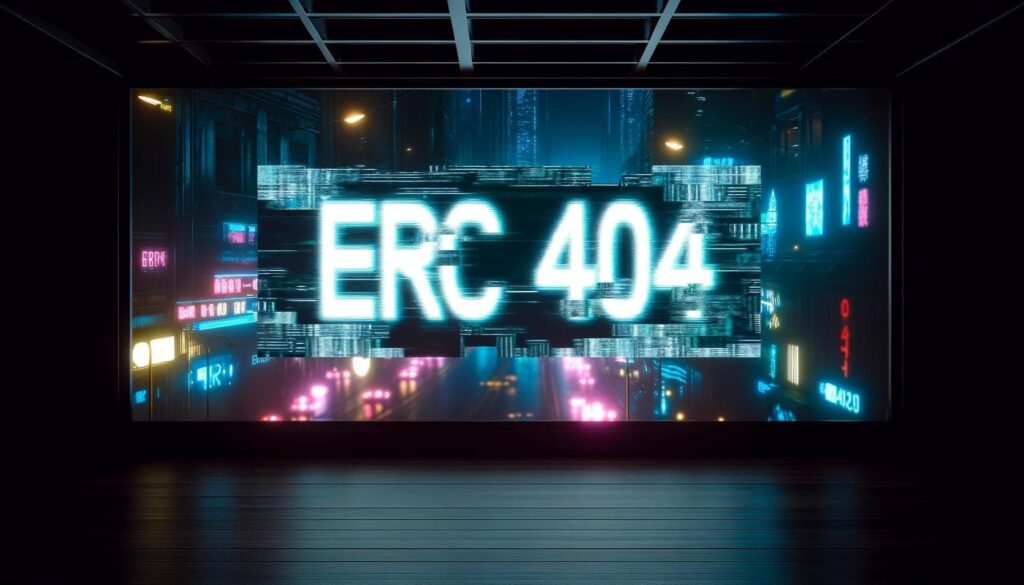The Ethereum network continues to evolve in the dynamic blockchain world, introducing innovative standards that redefine digital asset interactions. One such experimental token standard is ERC-404, designed to blend the characteristics of fungible and non-fungible tokens, thus birthing a new asset class: semi-fungible tokens. This innovation aims to streamline the efficiency and functionality of digital assets on Ethereum.
Historical Context and Development
The inception of the ERC 404 token marked a significant milestone in token standard evolution. Initiated by the inventive duo known as “ctrl” and “Acme,” this standard emerged from the need to harmonize the flexibility of fungible tokens with the uniqueness of non-fungible tokens. While previous standards like ERC-20 and ERC-721 catered to distinct asset classes, ERC-404 introduced a hybrid approach, setting a new precedent in the tokenization landscape.
Technical Overview of ERC-404
ERC-404 operates on a unique mechanism where each token is linked to an NFT, allowing for fractional ownership of non-fungible assets. This linkage enables the minting and burning of tokens, reflecting the ownership changes of the associated NFT. This technical framework enhances the token utility and introduces a novel concept in asset management and transferability within the Ethereum ecosystem.
Key Projects and Applications
Pandora is a pioneering project utilizing ERC-404, which encapsulates the standard’s potential by integrating fungible tokens with colored box NFTs. Following Pandora’s footsteps, other projects like DeFrogs and Monkees have also ventured into the ERC-404 domain, demonstrating the standard’s adaptability and appeal across diverse applications.
Benefits of ERC-404
The introduction of ERC-404 brings several advantages, such as improved liquidity and the native fractionalization of NFTs. These benefits address some of the longstanding challenges in the NFT market, offering a more fluid and versatile trading experience. Furthermore, ERC-404 enhances the rarity dynamics of NFTs, allowing owners to potentially increase their assets’ value through strategic trades and transfers.
Challenges and Criticisms
Despite its innovative approach, ERC-404 faces skepticism due to its unaudited status and the lack of formal recognition as an official Ethereum standard. These factors introduce risks and uncertainties concerning security and compatibility with existing systems. Additionally, the experimental nature of ERC-404 suggests that it may undergo significant modifications, impacting early adopters and developers.
Future Prospects and Developments
As the ERC-404 standard continues gaining traction, its creators and adopters are keen on navigating the Ethereum Improvement Proposal (EIP) process to establish it as a recognized standard. The journey of ERC-404, from an experimental concept to a potentially official token standard, reflects the ongoing innovation within the Ethereum community, promising to unlock new possibilities for digital asset interaction.
Finale
The ERC-404 standard represents a pivotal moment in the evolution of digital assets on the Ethereum blockchain. It blends the best elements of fungibility and uniqueness to create a new paradigm: semi-fungible tokens. This innovative approach is not just a technical advancement; it’s a philosophical shift that challenges conventional perceptions of asset ownership and exchange in the digital realm.
As the blockchain community delves into the possibilities offered by ERC-404, the standard’s potential to revolutionize the NFT market is undeniable. By addressing critical issues such as liquidity and fractional ownership, ERC-404 paves the way for a more dynamic and accessible market. Collectors and investors can now engage with digital assets in unprecedented ways, opening up a landscape ripe with opportunities for experimentation and innovation.
However, the journey of ERC-404 is not without its hurdles. The standard’s experimental status and the absence of a formal Ethereum Improvement Proposal (EIP) present challenges that must be navigated carefully. Security, integration, and market acceptance concerns are legitimate and underscore the need for a cautious yet optimistic approach to adopting this new standard.
Looking ahead, the evolution of ERC-404 will be a litmus test for the adaptability and resilience of the Ethereum ecosystem. As developers and creators continue exploring this new frontier, the standard could become a cornerstone of the next generation of digital assets or serve as a valuable learning experience in the ongoing quest to refine blockchain technology.
For enthusiasts, developers, and investors, staying informed about the developments surrounding ERC-404 is crucial. Platforms like hotcoinpost.io offer insights into emerging technologies and provide a comprehensive view of the blockchain landscape, helping stakeholders make informed decisions in a rapidly evolving domain.
In conclusion, ERC-404 embodies the innovation and exploration spirit defining the blockchain community. Its trajectory will offer valuable lessons and potentially set new benchmarks for how we interact with digital assets, shaping the future of blockchain technology in profound ways.
